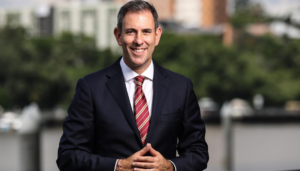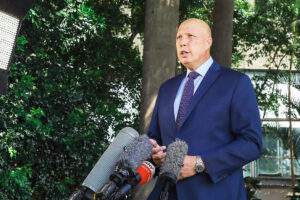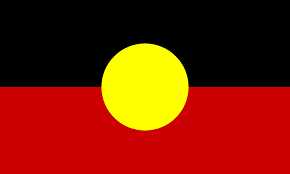 Written by Gordon Meredith
Written by Gordon Meredith
It was a budget predicted by many as unlikely to occur, but Treasurer Jim Chalmers fourth Federal Budget has unofficially kicked off the federal election.
Many of big-ticket items have already been announced in pre-campaign announcements – except for the headline budget item of $17.1bn in tax cuts.
Despite a $26.7 billion deficit (after two consecutive surpluses), the Treasurer used his Budget Speech as an opportunity to outline the Government’s economic successes of the last three years, but also to share some concern about the current global economy, which he described as “volatile and unpredictable” and shared that “Treasury expects the global economy to [only] grow 3.25% for the next three years – its slowest since the 1990s.”

Treasurer Jim Chalmers has delivered his fourth Federal Budget.
While the Treasurer didn’t identify the political change in the United States as a cause of this downturn, the implication – and concern – was clear.
With the election campaign circus rapidly approaching mainstream media, the post-budget headlines of “winners and losers” have flooded the mastheads. Behind the headlines of handouts and cold shoulders, in the details of the Budget Measures, is some illumination of what this government’s focuses are if they regain power, and what their challenges might be during the upcoming campaign.
As such, below is some topline analysis of the budget details explaining how they can inform us about how the government’s policy appetite and temperament is changing.
Cost of Living vs. Cost of Doing Business:
The intention of the Federal Government’s cost of living measures (including delayed tax cuts, energy, health care, student debt relief and pensioner measures) is to create a flow on effect of uptick in consumer confidence. The Government is also reducing the costs of 30 essential products, such as milk, fruit, vegetables, and nappies in stores in remote First Nations communities to help ease cost-of-living pressures.
One attempt by the government to bolster Australian retail purchases is the announcement of the Prime Minister’s “Buy Australian Campaign” - where $20 million will be supplied to the Department of the Prime Minister and Cabinet for “initiatives to encourage consumers to buy Australian made products.” The timing, duration or focuses industries of this campaign are yet to be determined.
Concerns have been raised by multiple retail associations, however, over the lack of commitments to help support business, especially in a climate of increasing operating costs. Limited supports (outside of the Building Australia’s Future – Support for Australian Made Metals) have been offered to the business community, aside from commitments of “$17.1 billion over 10 years to improve freight efficiency through road and rail projects” in attempt to improve supply chain resilience.
This is consistent with the overarching narrative of this budget in the lead up to the Federal Election, namely that the Government is extremely focused on addressing the cost-of-living pressures of individuals and consumers – with less focus given to the business community in general, aside from US-tariff affected industries.
Supporting (and Regulating) Australian Business:
In his Speech to Parliament, the Treasurer also proudly proclaimed that his government was “cracking down on the supermarkets” which according to the Budget Measures, includes large retailers.

The big supermarkets won’t be getting any relief this election campaign.
The Government will increase funding to the ACCC by $38.8 million to assist the Commission in combatting “misleading and deceptive pricing practices and unconscionable conduct in the supermarket and retail sector.” While the concentrated target of this measure is the supermarket duopoly of Coles and Woolworths, larger retails groups (such as Wesfarmers) will also come under the ACCC emboldened remit.
Two other commitments of note are:
- $2.9 million to strengthen the Food and Grocery Code of Conduct, which is now compulsory for all supermarkets, and;
- $240 million for states and territories to “liberalise, simplify and standardise their commercial planning and zoning regulations and processes” to make it easier for independents to open new supermarkets
Both show a clear intention from the Government to continue the progression of strong regulation of large-scale supermarkets and retailers with a view to locking down Labor’s vote in the suburbs.
Government brings the NDIA in-house:
During a pre-election campaign where the coalition have been promising cuts to the public service, Labor has used this budget to increase the funding of the NDIA – with the majority of the allocation used to employ more public servants (1,116 new staff) directly.

Treasurer Jim Chalmers and Finance Minister Katy Gallagher
Finance Minister Katy Gallagher says the federal public service is “about the right size”, but the NDIA was using an oversized number of contractors, and that some of that external labour will be converted into permanent work, directly expanding the agency. An additional $175.4 million will also be spent on enhancing the NDIA’s fraud detection systems.
A concerted effort to move away from a contractor model for NDIA / NDIS processes and practices is a government directive that highlights their intention to drive the narrative of the future of the NDIS themselves.
Not the climate for change
Off the back of ex-Tropical Cyclone Alfred, the threat of climate change to the budget has grown significantly. This threat isn’t, however, addressed in any great depth in this year’s budget.
While there is continued commitments for “cleaner, cheaper energy” the focus is clearly on cheaper first with a combined $6.8 billion spent both previously and in future estimates on energy bill relief compared to $2 billion allocated for the expansion of the Clean Energy Finance Corporation to invest in renewable power and storage, energy efficiency, and other low emissions technology.
Government’s hesitancy to outline a more detailed renewable energy investment and development plan may be due to wedge nature of this issue, with the Teal independents and Greens campaigning for abolition of all fossil fuels, even those used a firming source as the right-side coalition offers the alternative solution of nuclear energy.
Back to the Future of Health
The Government returned to its Whitlam and Hawke roots committing to the largest investment into Medicare since it’s re-inception in 1984. The $7.9 billion investment is charged with increasing the bulk-billing rate of GP clinics to 90%, as well as establishing a further 50 Medicare Urgent Care Clinics across the country.
While obviously targeting the health needs of Australians, this investment in Medicare is a clear cost-of-living measure as well, and as such has seen a rare bipartisan commitment from Peter Dutton’s opposition.
Learning and Training for our Future
Education was a key pillar of the budget with substantial commitments allocated to early childhood, primary, TAFE and university education. Again, while all commitments will serve to improve education at all levels for the common group, they tie back into the government’s key priorities:
- Cost of Living: All the government’s measures directly reduce the financial stress individuals experienced with regards to the cost of participation in education
- Workforce Restraints: the 3 Day Guarantee, (replacing the Child Care Subsidy Activity Test) will attempt not only to make childcare more affordable, but also to increase workforce capacity by allowing parents to return to the workforce sooner.
- Future Made in Australia: 100,000 Free TAFE in priority sectors is a clear indicator of how this government intends to incentivise participation in industries that are experiencing shortages.
What’s Next?
In many respects, this was budget wasn’t meant to have been tabled, now that it has the question is: will have any impact on the upcoming federal election?
It is evident that this will be a cost-of-living election, above all else, and as such there is great interest in the opposition leader’s budget reply on Thursday night.
So far in this pre-campaign, the coalition have been happy to either negate or accept policy announcements from the Labor but have offered little in the way of alternatives. Thursday night will be Peter Dutton’s opportunity to set out a clear economic policy platform.

Federal opposition leader Peter Dutton
The opposition leader’s address will also outline what the coalition government, or coalition led minority government’s focuses would be for the next term.
How we should prepare for such potential change in May will be the theme of our upcoming federal election series.
Here, we will explore the key trends we are witnessing during the campaign, analyse the policy announcements from each of key political players and explain what it all means for impacted organisations and stakeholders.
We look forward to sharing our thoughts with you throughout the campaign.
If your organisation would like assistance in how best to communicate your message during an election window, please reach out to us.


